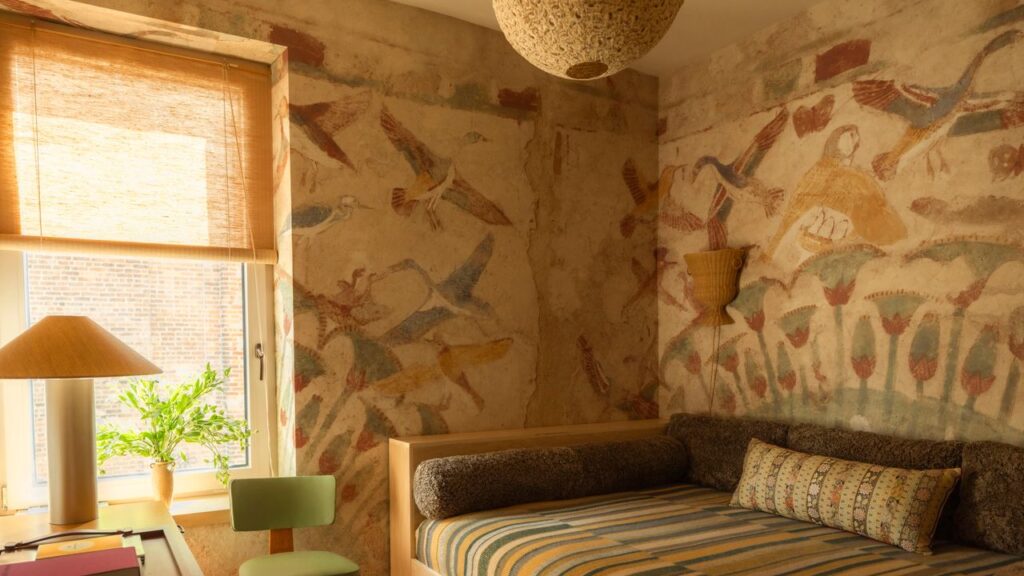At the beginning of September, I escaped the city (barely) to Woodlawn Cemetery in the Bronx with my friends Fabio and Douglas. They’d signed us up for the landscape and architecture tour of the landmarked burial grounds, opened in 1863. I love cemeteries, and here, the 19th- and early-20th-century tombs felt almost like a catalogue of architectural trends of the day: Gothic Revival for the Vanderbilts, Art Deco for the Macy’s owners Ida and Isidor Straus, neoclassical for industrialist John Warne Gates. Most memorable for me was the mausoleum of department store mogul F. W. Woolworth, realized in 1920 by architect John Russell Pope in the Egyptian Revival style. Think: hieroglyphic-lined pillars and an entrance flanked by two sphinxes. Interestingly, as our guide pointed out, this was built before the 1922 discovery of King Tut’s tomb, an event that catalyzed a Western obsession with Egyptian material culture. Cue: my research rabbit hole into “Egyptomania,” a term we should probably retire but that nevertheless still somehow aptly captures the Western (read: colonialist) craze for the ancient North African civilization.
AD PRO members enjoy exclusive benefits. Get a year of unlimited access for $25 $20 per month.

The mania had actually swept Europe the century before, after Napoleon’s 1798 invasion of Egypt, during which the French emperor used his free time (lol!) to document the arts of the region. His later-published findings would inspire many of the motifs—sphinxes, winged creatures, urns, lotus flowers, and laurel wreaths—that appeared in the emergent Empire-style furniture and architecture. This continued interest is likely what inspired Woolworth’s theme-y resting place, just a few years before the next resurgence came in 1922, when furniture, clothing, and jewelry extracted from Tut’s densely packed tomb dazzled the public once again. That unprecedented unboxing would inspire elements of the nascent Art Deco, which would further abstract many of those motifs and bring Egyptian style, once an intellectualized interest of the upper societal echelons, to a wider public.


